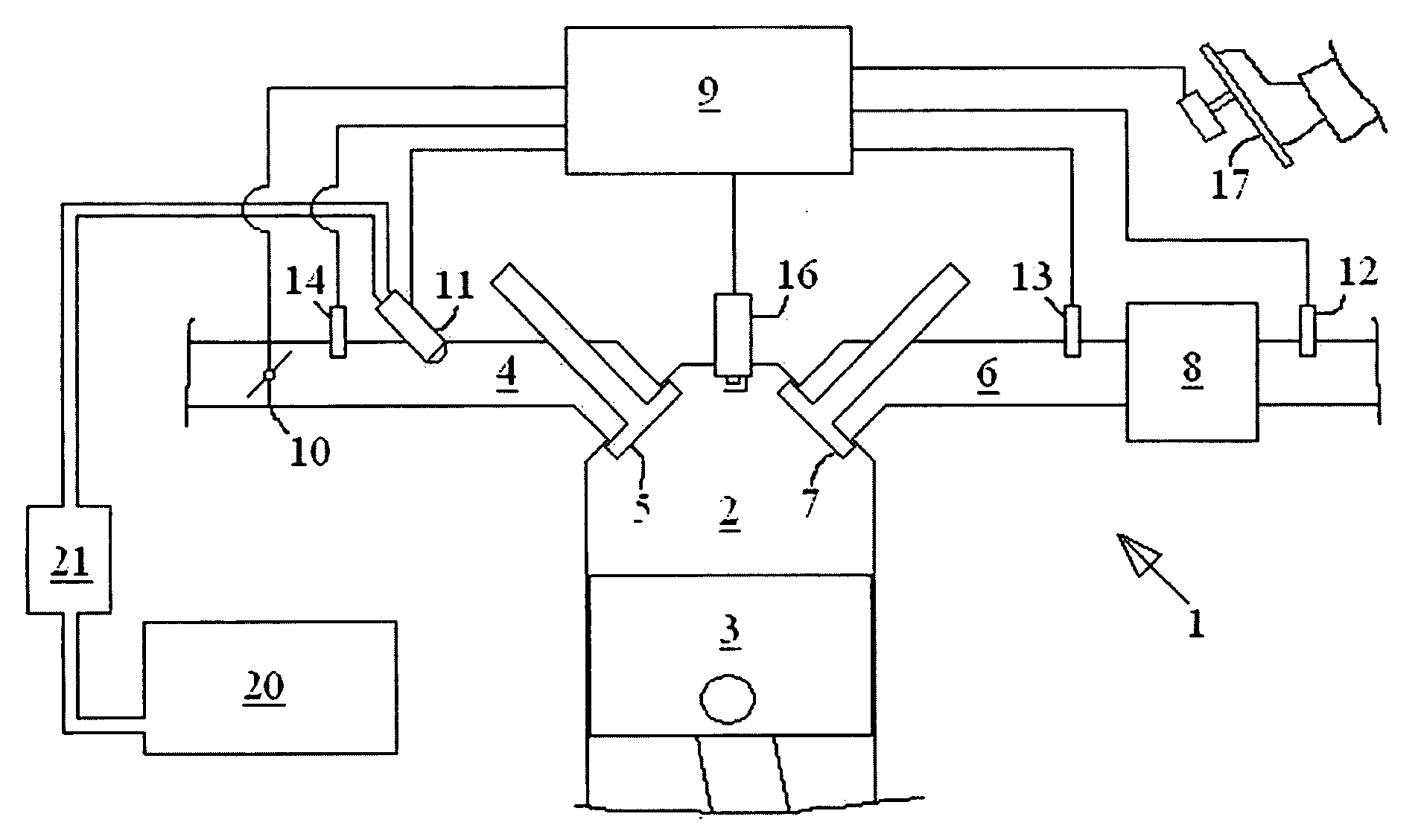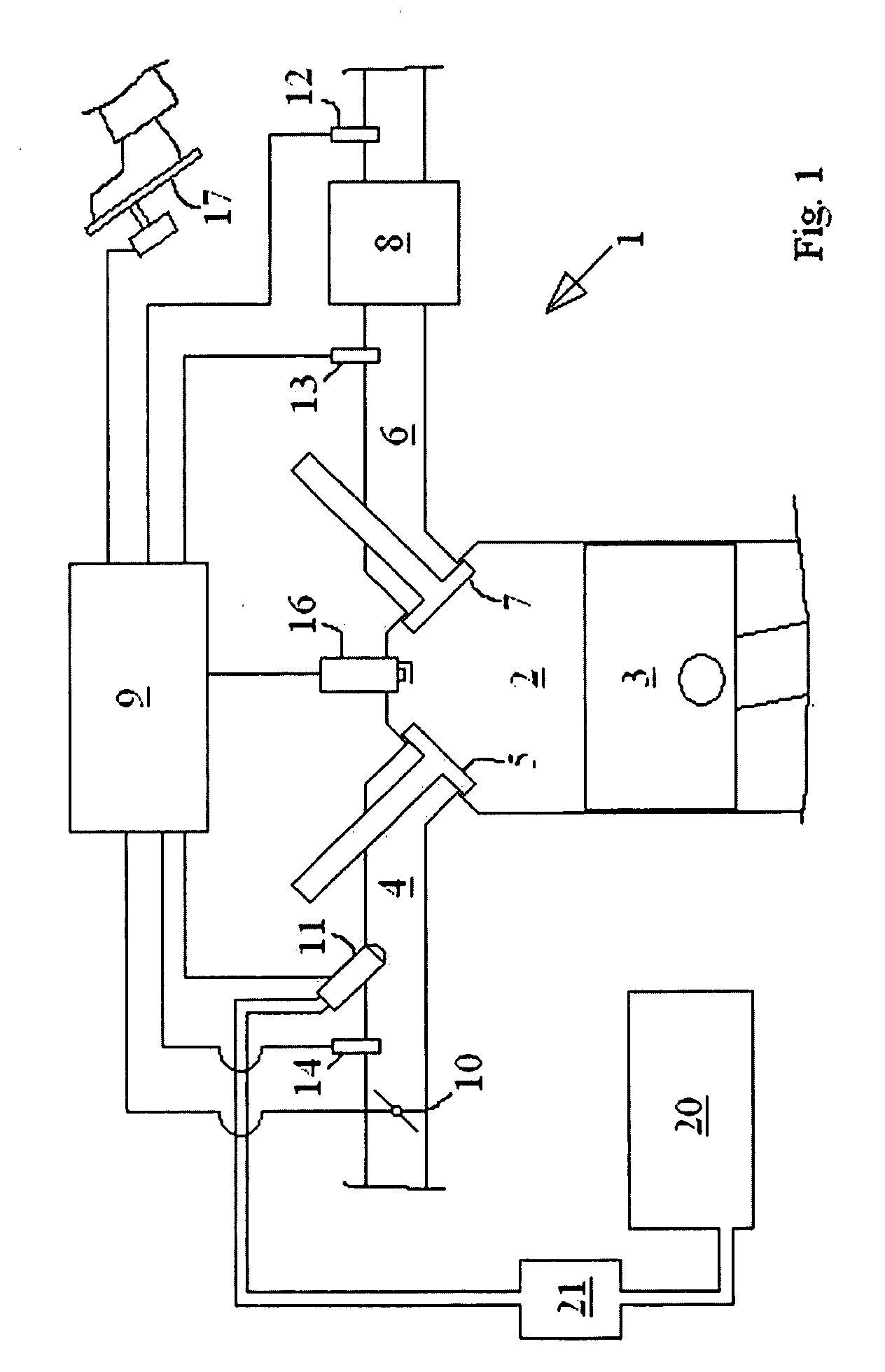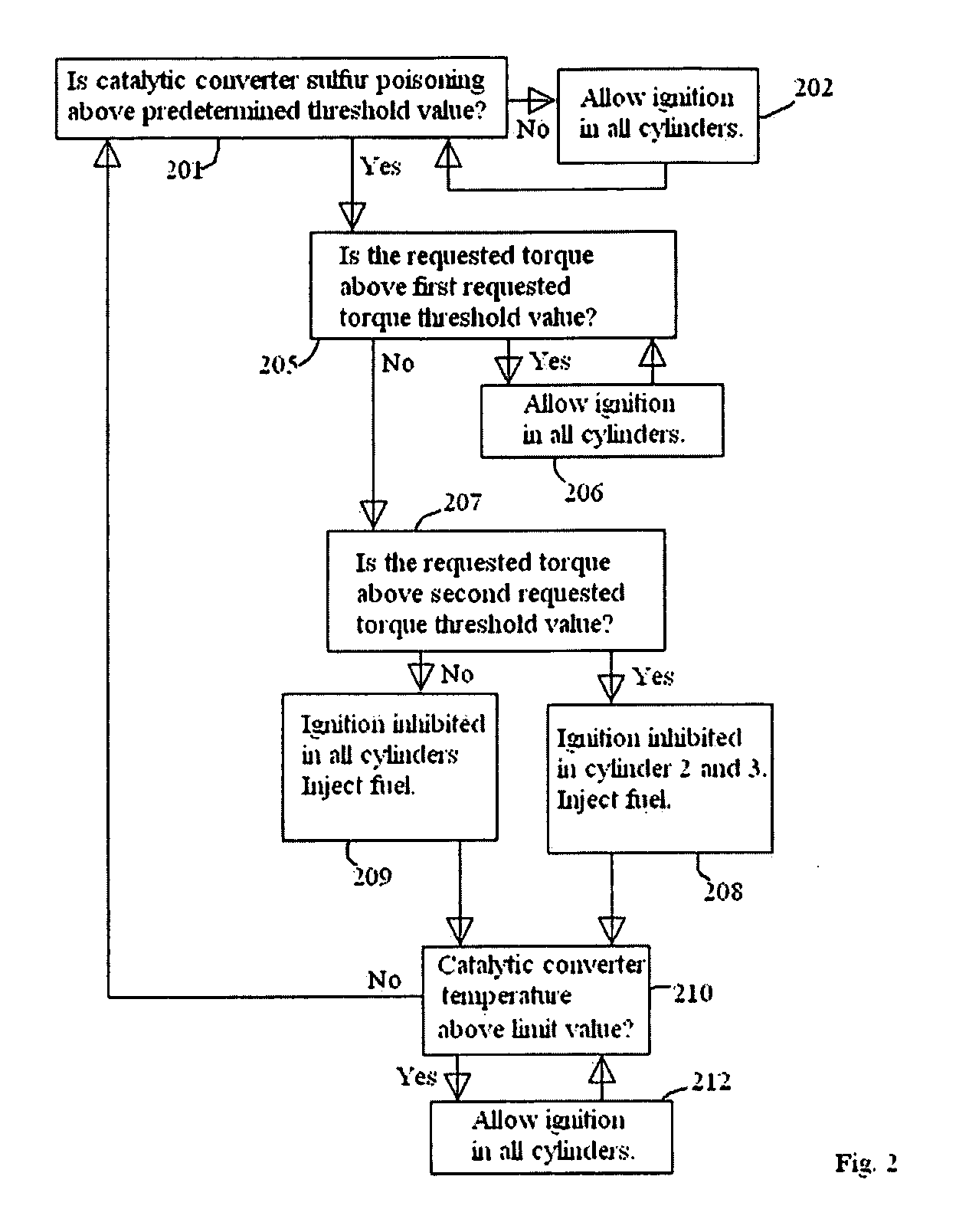Engine system and a method for a combustion inhibition regeneration of an exhaust gas treatment device in a such system
a technology of exhaust gas treatment device and engine system, which is applied in the direction of electrical control, process and machine control, etc., can solve the problems of reducing the capacity of converter, and reducing the efficiency of catalyst exhaust gas treatment device sulfur, etc., to achieve fast and precise control of reduce the amount of fuel injected while ignition inhibition is inhibited, and reduce the temperature of the exhaust gas treatment device
- Summary
- Abstract
- Description
- Claims
- Application Information
AI Technical Summary
Benefits of technology
Problems solved by technology
Method used
Image
Examples
Embodiment Construction
[0024]FIG. 1 shows a schematic view of parts of an exemplary vehicle engine system 1 comprising an internal combustion engine. The engine comprises four cylinders 2, of which only one is shown in FIG. 1, each with a reciprocating piston 3. It should be noted that the invention is applicable to engines with any number of cylinders. Communication between each cylinder 2 and an inlet duct 4 is controlled by at least one respective inlet valve 5, and communication between each cylinder 2 and an exhaust duct 6 is controlled by at least one respective exhaust valve 7. Downstream from the cylinders 2, an exhaust gas treatment device 8, in the form of a catalytic converter, is provided.
[0025]The engine system 1 also comprises an engine control unit (ECU) 9, which can be provided as one unit, or as more than one logically interconnected physical units. The ECU 9 is adapted to control air flow control system comprising a throttle valve 10, and fuel injection system 11 comprising at least one ...
PUM
 Login to View More
Login to View More Abstract
Description
Claims
Application Information
 Login to View More
Login to View More - R&D
- Intellectual Property
- Life Sciences
- Materials
- Tech Scout
- Unparalleled Data Quality
- Higher Quality Content
- 60% Fewer Hallucinations
Browse by: Latest US Patents, China's latest patents, Technical Efficacy Thesaurus, Application Domain, Technology Topic, Popular Technical Reports.
© 2025 PatSnap. All rights reserved.Legal|Privacy policy|Modern Slavery Act Transparency Statement|Sitemap|About US| Contact US: help@patsnap.com



